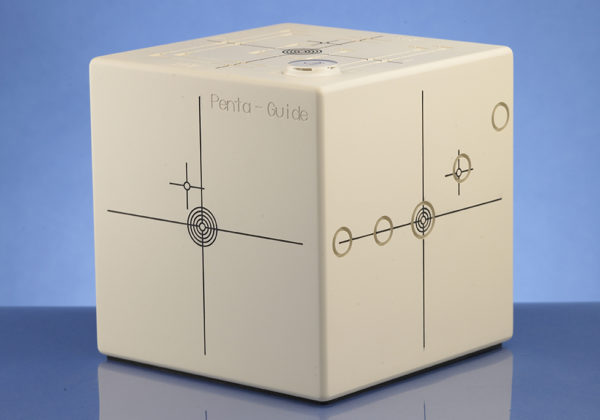- Clinical
- Physics
- QA
- Dosimetry
- Proton QA & Dosimetry
- Software
- ART-Plan by TheraPanacea
- COMPASS Patient Dose QA
- ImSimQA™
- myQA® Software Physics QA Platform
- myQA® iON for conventional radiotherapy
- myQA® iON for Proton Therapy
- ProSoma – Virtual Simulation
- ProSoma Core – MC plan, check, and logfile analysis
- RadCalc QA Software
- RIT Family of Products
- SagiPlan® HDR & Focal Therapy Planning
- MRI Physics Solutions
- SGRT
- Medical Imaging
- Exterior and Interior Design
- Manufactured by
- Support & Finance
- News
- About
- Contact
QUASAR™ MLC

Non-dosimetric tests for commissioning, system characterisation and routine QA.

Overview
The QUASAR™ MLC Beam Geometry Phantom is designed to address the complex non-dosimetric, beam geometry and beam imaging features of modern planning systems:
- Tests beam integrity from CT simulation and planning to the linear acceleration and portal imaging system.
- Reveals errors in beam imaging, DICOM transfer, registration, alignment, and orientation.
- Compatible with standard collimators, MLCs, mini MLCs, and micro MLCs from multiple vendors, including Varian, Elekta, Siemens, Brainlab and Radionics.
- For IMRT, 3D conformal RT, and conventional RT.
- Supports non-dosimetric tests for equipment commissioning, technique commissioning, system characterisation, and routine QA protocols.
The development of new technology, such as IMRT and other conformal therapies, has led to increased demands on physicists responsible for commissioning and maintaining radiotherapy equipment. AAPM Task Group reports, including TG 66(1), TG 53(2), and TG 51(3), make clear recommendations regarding the importance of both dosimetric and non-dosimetric tests within an overall integrated QA process.
“The modern RTP process includes many aspects not directly related to dose calculations. Therefore, the RTP QA program must also handle these important non-dosimetric issues…for it is in the non-dosimetric issues that much of the complexity of modern treatment planning systems is manifest.”
TG53 Report p. 1782-83 (2)
Key Features
- Physical simulation of beam with MLC leaf locations
- Simulates couch and gantry rotations
- Enables end-to-end testing of beam integrity
- Used for commissioning and testing upgrades and repairs
- Compatible with multiple vendors
The QUASAR™ MLC Beam Geometry Phantom clearly addresses non-dosimetric issues and plays an important role in the overall QA process.
Phantom Testing Capabilities
- Multiplanar CT Image reconstruction, geometric accuracy, orientation, and 3D measurement tools on CT simulators, radiation therapy planning systems and other imaging workstations
- Beam display graphics at oblique gantry and couch angles
- Digitally reconstructed radiographs
- Portal images on linear accelerators
- Image transfer, storage, retrieval, DICOM tools on all workstations
- 2D image geometric accuracy and measurement tools
- 5 mm (MLC), 4 mm (mini MLC) and 3 mm (micro MLC) steps allow Medical Physicists to test the integrity of treatment planning systems and CT-simulators in the display of MLC-shaped fields on transverse or reconstructed images
The QUASAR™ MLC Beam Geometry Phantom clearly addresses non-dosimetric issues and plays an important role in the overall QA process
Found what you're looking for or need to discuss your requirements?
Call us today on +44 (0)1743 462694 or email us here
Access your product documents and software downloads via OSL Portal




